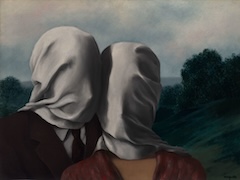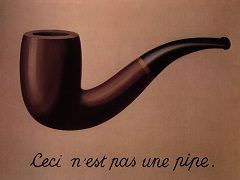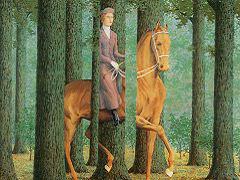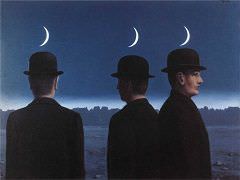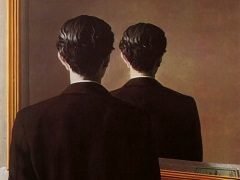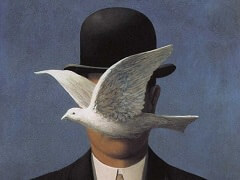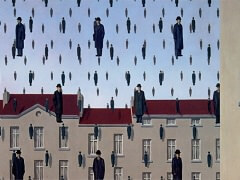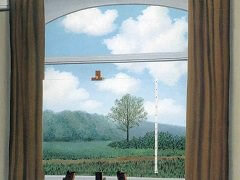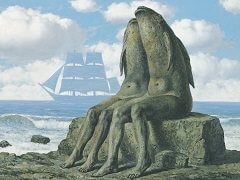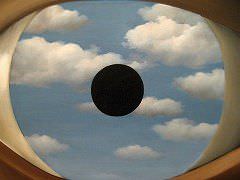The Central Story, 1927 by Rene Magritte
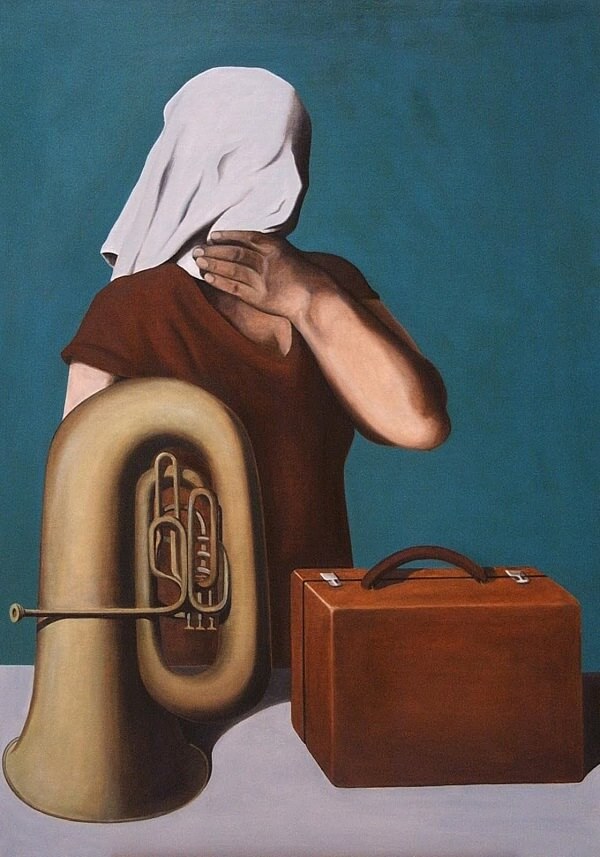
Surrealism theory bases on psychoanalysis works by Sigmund Freud. Through his readings of dream imagery, Freud opened the door for visual artists to exploit the ambiguity of
an object, exploring associations and implications, through irrational juxtapositions, rather than the literal meaning of the thing itself.
Magritte's mother commit suicide by drowning herself when Magritte was very young. She was discovered with her face veiled by her gown with her naked body showing. The Central Story is very personal work depicts
the suicide story of the painter's mother. The woman, whose face is obscured by a white cloth (also found in some of The Lovers paintings) has her left hand around her throat as if
choking herself.
The objects here (veil, tuba, suitcase ...) are less a representation of reality than a manifestation of Magritte's thoughts. The tuba is linked to the female body - its cold and static appearance is like the lifeless
corpse of the drowned woman. However, we can see that the woman's figure is more like Magritte's wife's.



